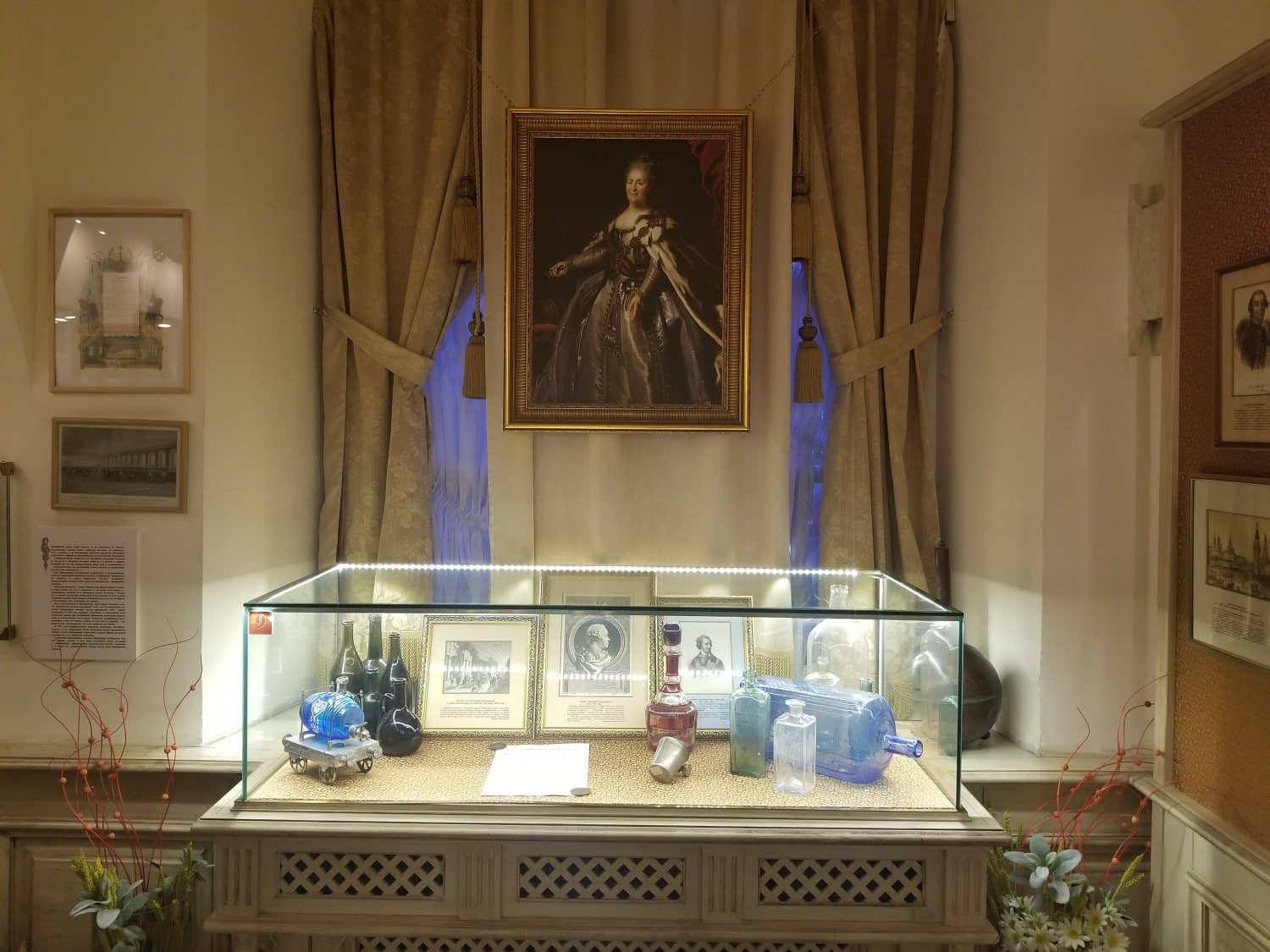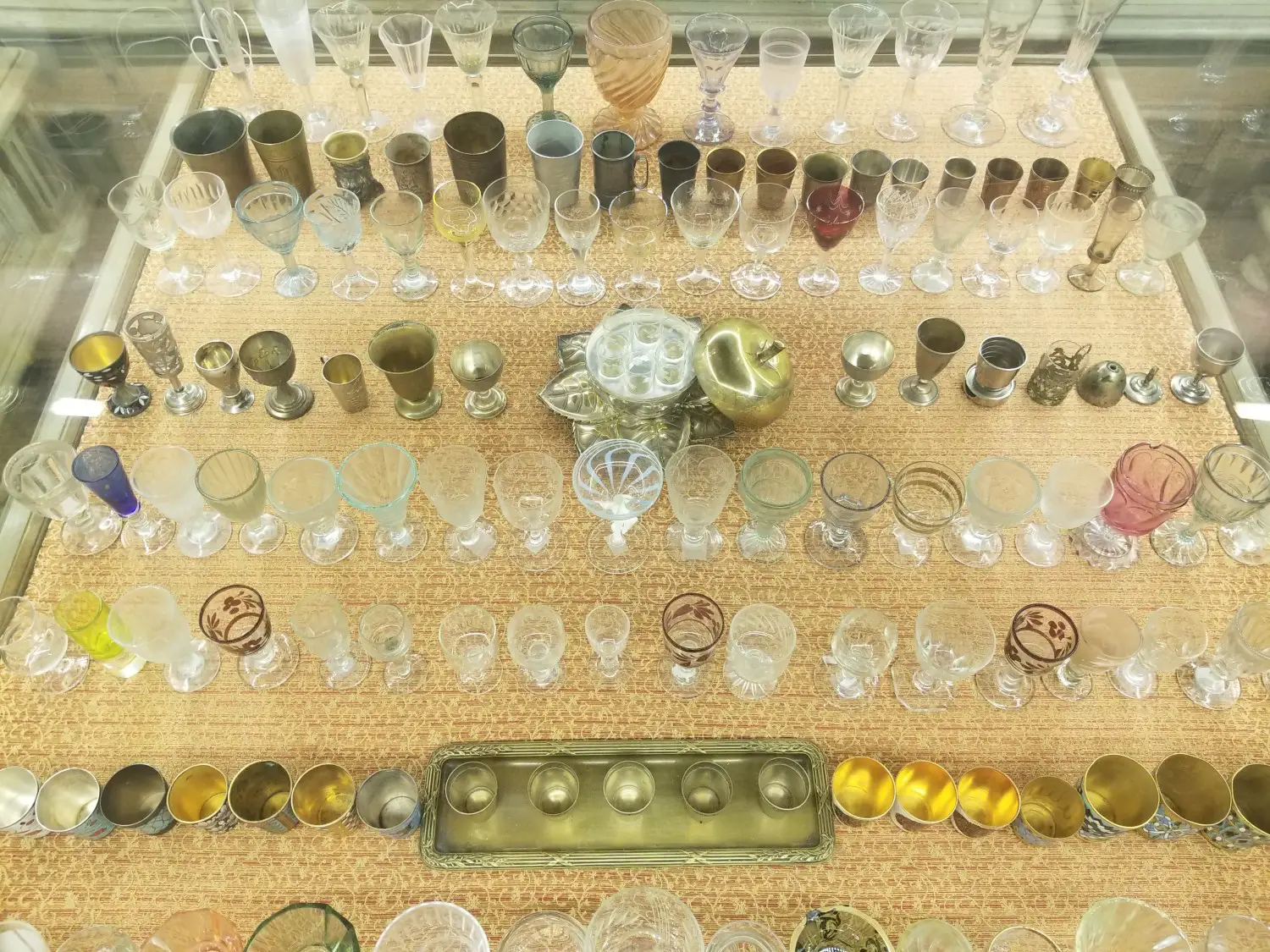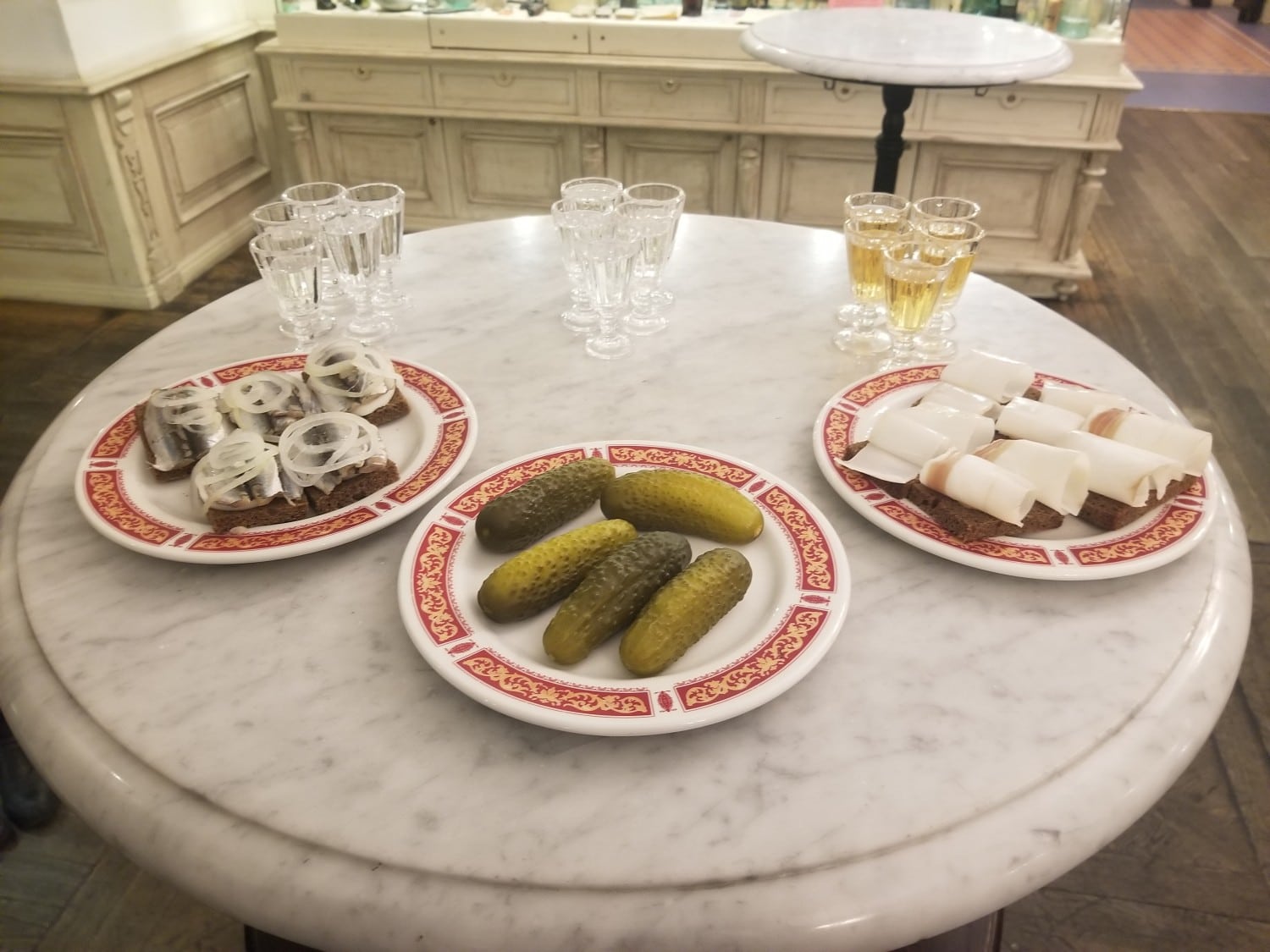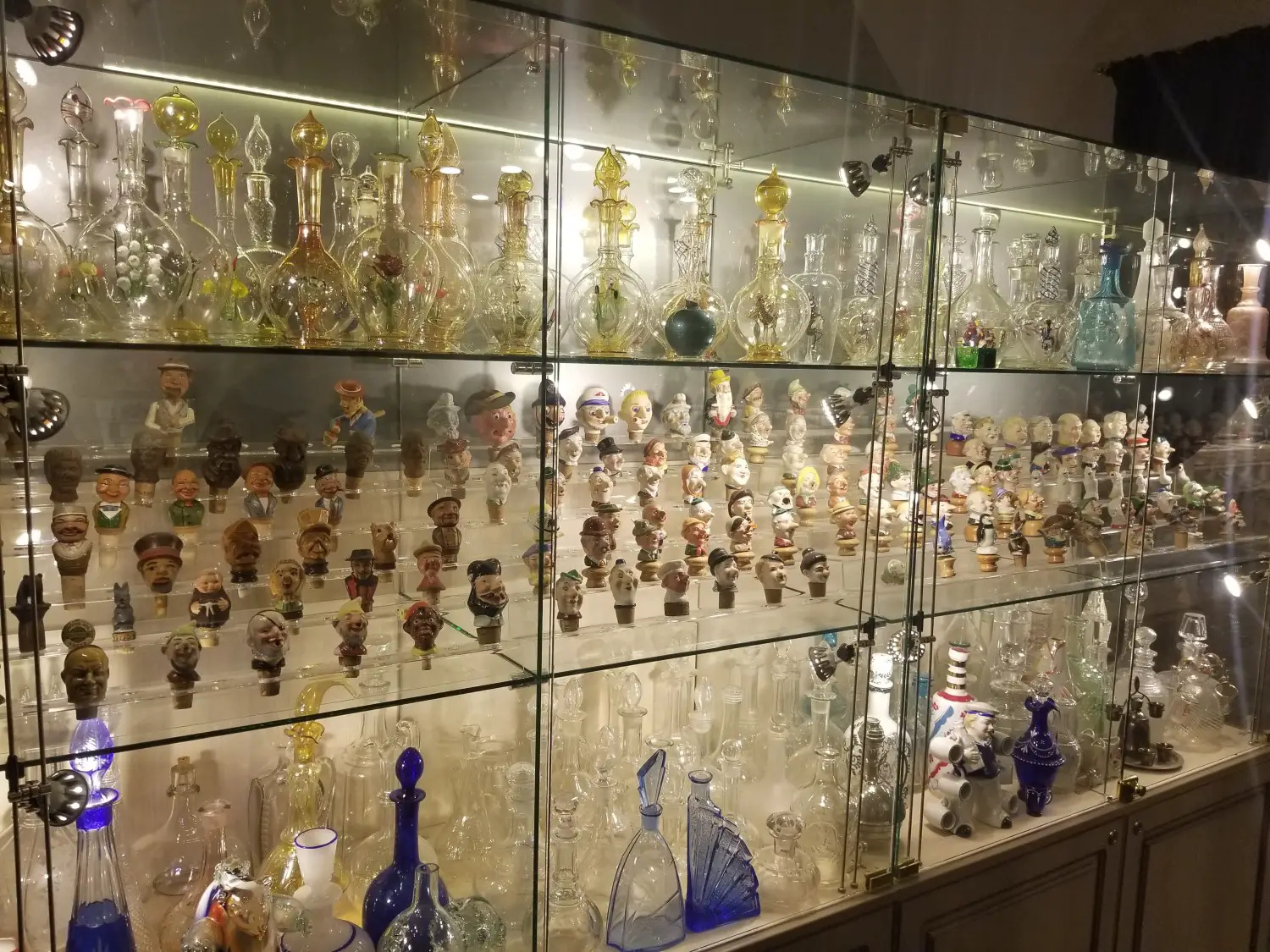The Museum of Russian Vodka in St. Petersburg uses vodka to take visitors on a delightful stroll through Russian history. One can even sample different varieties of vodka along the way.
The museum is located a block and a half away from the Aleksandrovskiy Garden at Konnogvardeyskiy Bulvar 4, and operates from 12 pm to 7pm daily with tours available at all times during business hours. Tour guides are available to give tours in Russian or English, and audio tours are available in Russian, English, German, French, Spanish, and Italian. Prices vary depending on the type of tour; the base cost of admission without a tour or vodka tasting is 200 roubles (approximately $3), while the cost of admission with a guided tour and the vodka tasting is 600 roubles (approx. $9).

I went to the museum with a group of fellow international students, and we opted to do the audio tour so that everyone could listen in their native language. Of course, we opted to do the vodka tasting with the audio guide, which is also an available combination for 500 roubles (approx. $7.50). The benefit of having the audio tour is that all information inside the museum is written only in Russian, so visitors who cannot read the Russian can fully understand the exhibits with the guide. I, however, stopped using the audio device within the first four exhibits. Personally, I found the museum more enjoyable to walk through and see all of the artifacts while understanding some of the Russian descriptions. Not that the audio was uninformative, but it was difficult to understand at times and there was background noise that detracted from the content. If I were to return to the museum I would either pay for the tour with an actual guide or forgo the tour altogether and remember to bring a good dictionary.
The museum itself consists of two rooms, one large room with 24 exhibits, and a second smaller room with the last few exhibits and a bar area. The exhibits cover a wide variety of topics relating to the history of vodka in Russia—from an overview on the different types of grains that were historically used to an overview of the laws and drinking habits from the reign of Ivan the Terrible to the 20th century. Funny enough, thanks to a myth that Dmitri Mendeleev created vodka there is a life size figure of Mendeleev on exhibit. Other exhibits that I personally enjoyed were the shot glasses, decanters, and various decorative corks—I think it is fascinating to ponder whose hands held the glasses, and how each piece found its way to the museum.

Now for the important part of the museum experience—the vodka tasting. By the time we had finished touring the exhibits, which took approximately half an hour, a table had been set with three samples per person as well as some traditional Russian drinking snacks. The vodka tasting should not be confused with a typical wine tasting, for example, and prior to the tasting we were given the simple instructions: “Don’t smell it, don’t sip it, just shoot.” Two of the vodkas we sampled were from Arkhangelsk and one from Baikal; the Arkhangelsk White is their plain vodka that would be available in an average liquor store, while the Arkhangelsk Black and the Baikal vodkas were infused, and likely one would have to find these varieties in a store that carries more specialty liquors. Overall, the tasting was a good way to try some Russian vodkas that might not be as well known to westerners.

The best part of the tasting, and the reason that I would encourage anyone visiting the museum to do the tasting, is the traditional drinking snacks. The museum is actually a private one owned and operated by the Stroganoff Restaurant Group, which has several restaurants in St. Petersburg, so the snacks were fresh and professional. With our vodka we were each given a pickle, a piece of black bread with mustard and shaved pork fat, and a piece of black bread with a hard boiled egg, sardines, and onions. I was apprehensive about the two pieces of black bread with toppings, but I went into the tasting with an open mind and a desire to experience a new part of Russian culture. In the end I am glad I tried both options, even though I could not eat more than a bit of the sardines, because the bread with pork fat is the perfect drinking snack.
The Russian Vodka Museum in St. Petersburg
Website
Konnogvardeyskiy Bulvar 4
Open: 12 pm to 7pm daily
Tours available in Russian or English
Audio guides available in Russian, English, German, French, Spanish, and Italian
Admission without a tour or vodka tasting: is 200 roubles
Admission with a guided tour and vodka tasting: 600 roubles







